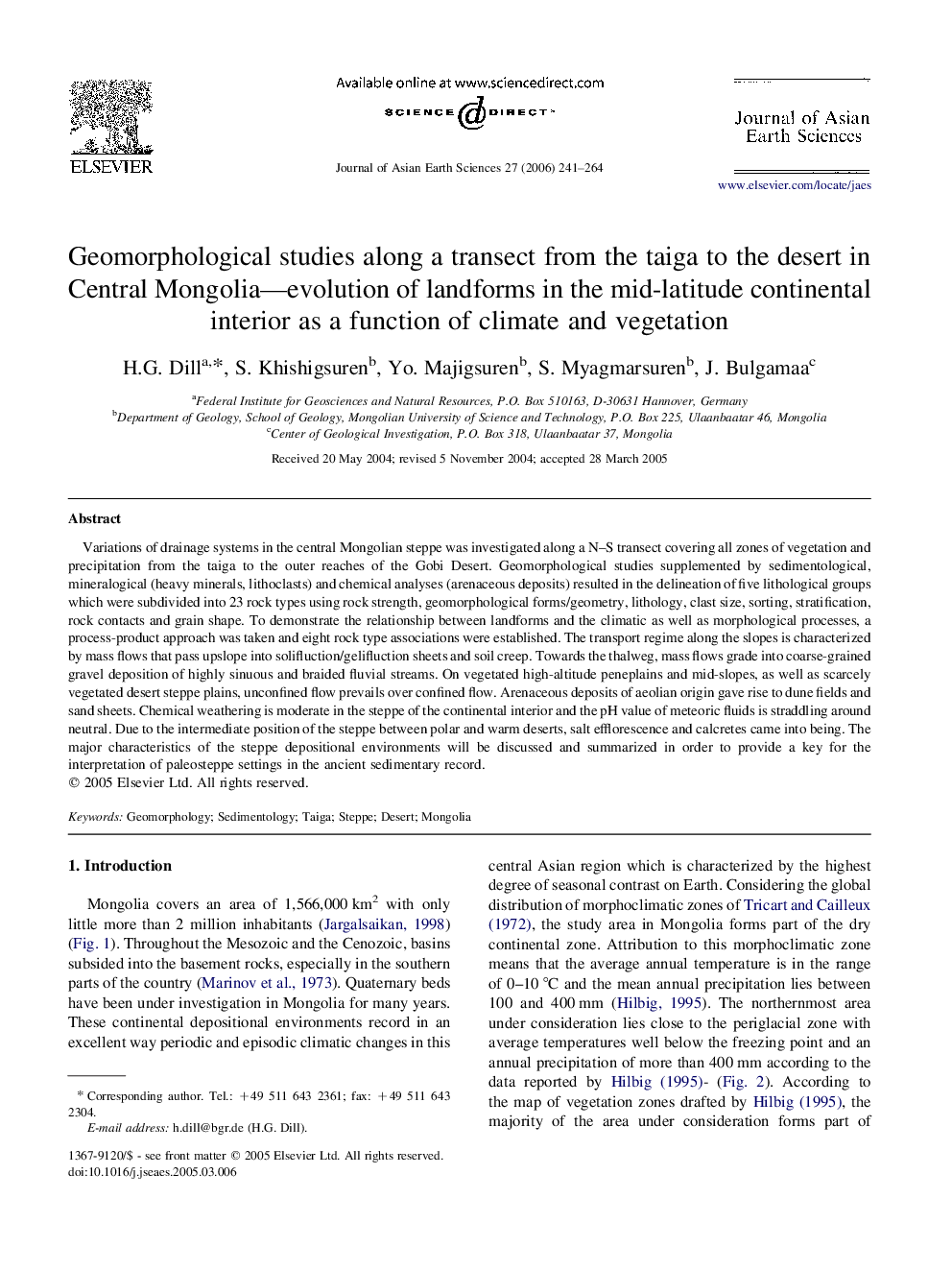| Article ID | Journal | Published Year | Pages | File Type |
|---|---|---|---|---|
| 4732531 | Journal of Asian Earth Sciences | 2006 | 24 Pages |
Variations of drainage systems in the central Mongolian steppe was investigated along a N–S transect covering all zones of vegetation and precipitation from the taiga to the outer reaches of the Gobi Desert. Geomorphological studies supplemented by sedimentological, mineralogical (heavy minerals, lithoclasts) and chemical analyses (arenaceous deposits) resulted in the delineation of five lithological groups which were subdivided into 23 rock types using rock strength, geomorphological forms/geometry, lithology, clast size, sorting, stratification, rock contacts and grain shape. To demonstrate the relationship between landforms and the climatic as well as morphological processes, a process-product approach was taken and eight rock type associations were established. The transport regime along the slopes is characterized by mass flows that pass upslope into solifluction/gelifluction sheets and soil creep. Towards the thalweg, mass flows grade into coarse-grained gravel deposition of highly sinuous and braided fluvial streams. On vegetated high-altitude peneplains and mid-slopes, as well as scarcely vegetated desert steppe plains, unconfined flow prevails over confined flow. Arenaceous deposits of aeolian origin gave rise to dune fields and sand sheets. Chemical weathering is moderate in the steppe of the continental interior and the pH value of meteoric fluids is straddling around neutral. Due to the intermediate position of the steppe between polar and warm deserts, salt efflorescence and calcretes came into being. The major characteristics of the steppe depositional environments will be discussed and summarized in order to provide a key for the interpretation of paleosteppe settings in the ancient sedimentary record.
